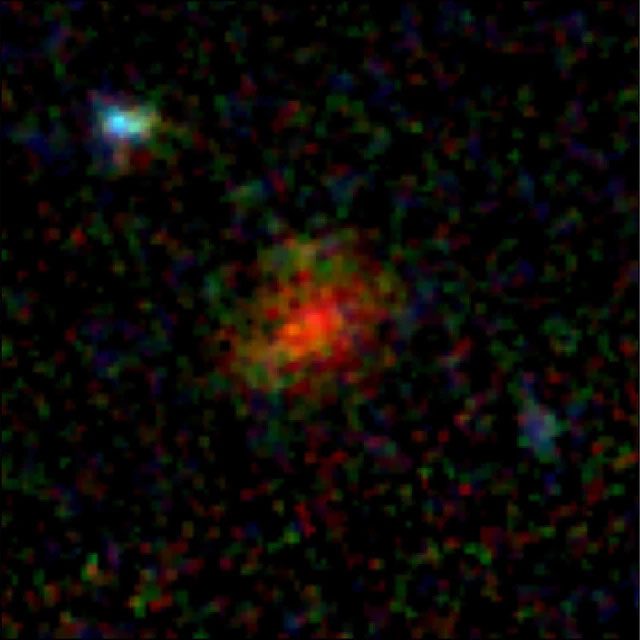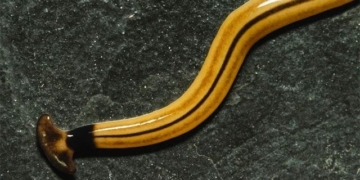The mysterious object first appeared as a bright spot through observations from several ground-based telescopes. Scientists then employed the extremely powerful Hubble Space Telescope in an attempt to view it more clearly, but it was nowhere to be found!
Recently, this enigmatic object unexpectedly reappeared under the “all-seeing eye” of the world’s most powerful space telescope, the James Webb Space Telescope, showing an image of a faint and extraordinarily strange galaxy.

The mysterious object identified as a star-forming galaxy filled with ancient dust – (Photo: NASA/ESA/CSA).
A team of 50 researchers from various academic institutions, led by the COSMOS-web project directed by Associate Professor Catilin Casey from the University of Texas at Austin (USA), meticulously examined this mysterious object in a study recently published in the journal Astrophysical Journal.
They identified it as a star-forming galaxy rich in dust from the early universe, named AzTECC71.
According to the research, the scientific journal PHYS noted that a dusty star-forming galaxy is very difficult to observe. The reason is that most of the light from its stars has been absorbed by the layer of dust, which then re-emits it at longer red wavelengths.
These galaxies have been nicknamed “Hubble’s dark galaxies” because the previous state-of-the-art space telescope also struggled to observe them.
The Near Infrared Camera (NIRCam) on the James Webb has overcome this issue, allowing it to observe the mysterious galaxy in faint red light.
This is a “golden discovery” as AzTECC71 is an extremely rare type of galaxy in the early universe.
Researchers state that it is actively forming stars beneath a dense layer of dust, in a region of space nearly 1 billion years after the Big Bang.
Because light takes billions of years to travel through the vast distances between ancient objects and Earth, advanced telescopes like James Webb provide us with a “time-traveling” view of the early universe.
Some unclear data collected by the COSMO-Web project suggests that AzTECC71 may have nearby companions, forming a cluster of three galaxies.
Dr. Jed MicKinney from the University of Texas at Austin, a member of the research team, commented: “This is truly a monster. Although it appears merely as a red dot, it is actually forming hundreds of new stars each year.”
This discovery also demonstrates that James Webb has the capability to observe some of the most extreme phenomena if scientists know how to utilize it.
Furthermore, the method used to identify AzTECC71 paves the way for exploring a potentially dense population of galaxies that may be lurking in the most ancient parts of the universe.




















































